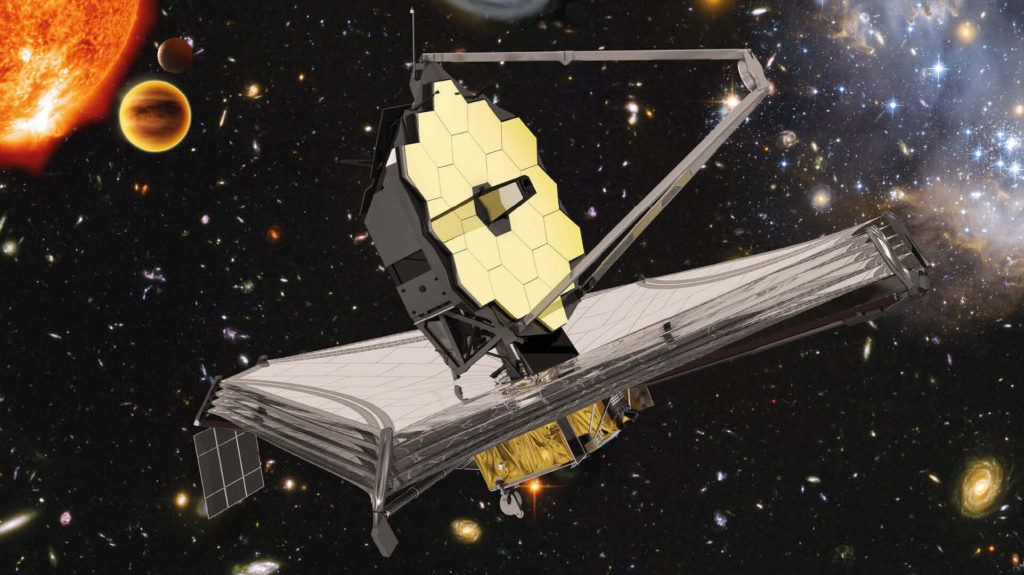This past Saturday, NASA announced its James Webb Space Telescope (JWST) had successfully unfolded its 21 foot, gold plated mirror, marking the final stage of the largest observatory ever created. NASA Administrator, Bill Nelson, shared that he “join[s] the team in breathing a little easier and imagining the future breakthroughs bound to inspire the world.” As one of NASA’s most complicated space deployments ever, the scientists must align the primary mirror segment with the rest of the telescope, which starts today, Jan. 11th. Mirror deployments take roughly 10-12 days to properly align, so there is still a rough road ahead for the astronomers.
The JWST is expected to arrive at its “insertion location” by the 23rd of this month, putting it in an area in space called Earth-sun Lagrange Point 2, roughly 930,000 miles away from Earth. This will allow the spacecraft to use the minimal amount of fuel necessary to stay in place because of the near-perfect alignment with the sun, Earth, and Moon. The distance from the sun will also enable the telescope to see through the darkness of space with its heat-seeking infrared technology. The JWST is equipped with four separate instruments (a near-infrared camera, near-infrared spectrograph, mid-infrared instrument, and a fine guidance sensor and spectrograph) that will work together to take revolutionary pictures of young exoplanets, the interiors of distant galaxies, and the universe’s evolution.
Although it may seem weird, and quite frankly a little nerdy, to get excited over a giant mirror in space, the James Webb Space Telescope really is a modern marvel. It’s successor, the Hubble Space Telescope, was admired for its ability to take pictures in space. With the JWST, the photos will be even clearer and be able to tell us even more about the universe we live in. We’ll be able to explore the darker, colder regions of space that don’t reflect much light thanks to the infrared technology used by the telescope. Scientists will be able to find and study recesses of space that were unbeknownst to us before, leading to more information about where our world, and the space material floating around us, came from.
NASA officials state the first images taken will be of stars, in order to check for accuracy, and a point in space called the Large Magellanic Cloud, to assess the telescope’s ability to register luminosity.


